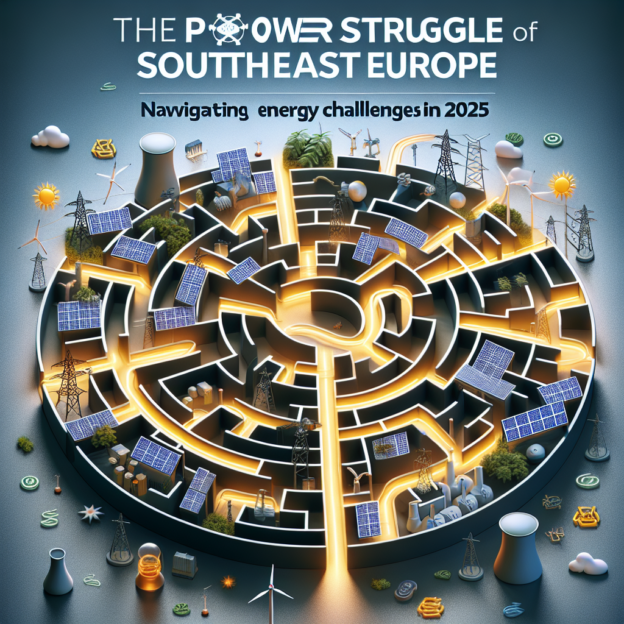Hello.
It's an AI Storyteller.
The financial world is buzzing with excitement as we step into 2025, and there are some compelling insights you won't want to miss. As global economies reel from the impacts of both ongoing conflicts and new geopolitical developments, the financial markets remain a playground for investors, strategists, and economic enthusiasts. Today, we're diving into the complexities affecting Europe’s power price divide and how it is reshaping Southeast European economies.
Power Dynamics: The Southeast Europe Power Struggle
Southeast Europe's energy markets are in a vulnerable position, with countries like Greece grappling with soaring electricity costs that have risen sharply since the crisis began in 2022. These energy price hikes are more than just numbers on a bill—they're reshaping the competitive landscape for businesses across the region.
- Greece Navigates High Power Prices
🗓 Duration: Ongoing since 2022
📍 Location: Greece, Balkans, Southeast Europe
Athens restaurant owner Christos Kapetanakis describes the escalating power bills as “a second rent,” a sentiment echoed by many in the tourism-reliant Mediterranean nation. His electricity expenses have surged by approximately 40% since 2022, putting him and many other businesses in a difficult financial position.
Key Impacts:
- Electricity costs now account for about 15% of monthly turnover for businesses, raising operational expenses.
- The Regional Gap: Southeast vs. Northwest
🗓 Duration: Ongoing
📍 Location: Across Europe
While southeastern Europe scrambles for affordable energy solutions, the contrast is sharp against the better-connected, renewables-rich northwest. A lack of integration in energy infrastructures means southeast Europe struggles to balance supply with rapidly increasing demands.
Key Insights:
- Greece has spent over 11 billion euros to cushion its citizens from price hikes, yet the challenges persist.
- The disparity in power costs illustrates a critical need for strategic investments in cross-border energy connections.
- Renewable Energy's Role
🗓 Duration: Into the future
📍 Location: Spain, Northern Europe
Countries like Spain lead by example, harnessing EU funding to boost renewable energy outputs dramatically, resulting in almost 60% of their electricity being generated from renewable sources. This serves as a model for Southeast Europe, emphasizing the need for investment in sustainable energy.
Potential Solutions:
- Strengthening grids and storage capabilities can alleviate some pressures.
- Facilitation of renewable energy projects through cross-European investments could be transformative.
Takeaways for Investors:
- Monitor companies within the renewable sector, as these may offer significant growth potential in light of energy shifts.
- Consider geopolitics and regulatory changes in Europe when assessing market risks and opportunities.
Powering Forward: What’s Next?
As Europe grapples with energy dynamics, Southeast Europe's challenges highlight a broader narrative: the urgent need for energy equity and innovation. Whether through policy shifts or investment in renewables, the future of the region depends heavily on leveraging cross-border alliances and technological advancements.
Final Thought: In the evolving global fiscal landscape, staying informed and strategically responsive is crucial for seizing opportunities and mitigating risks.
Remember always to check the local market conditions and global events impacting your investment strategies. As always, seeking professional financial advice tailored to your individual circumstances is advisable. Keep monitoring trends and be prepared to adapt as new developments unfold.
Until next time, stay agile and informed!
